|
LESSON 1 • PEOPLE AND PLACES
|
|
1.1 These children all come from different 1.2 What do you have in common with these |
11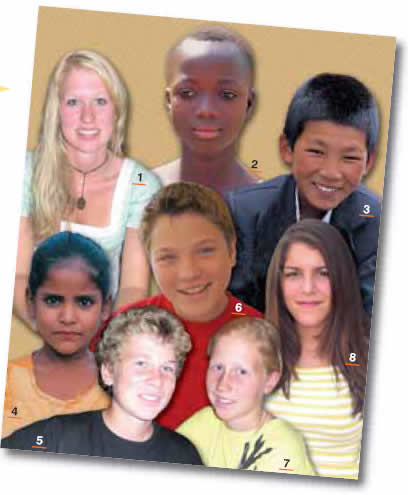
|
|
2.1 Look at the pictures of Nuru and Tikki and answer the questions.
|
|
LESSON 1 • PEOPLE AND PLACES
2.2 Nikos, a student reporter, interviewed an anthropologist about the way people look. Complete the table below with information from the article Nikos wrote for his school newspaper.
|
LESSON 1 • PEOPLE AND PLACES
|
2.3 Answer the questions. |
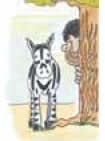 |
Usually and often are adverbs of frequency.
|
LESSON 1 • PEOPLE AND PLACES
|
|
4.1 Describe someone from your class. Can your classmates guess who it is? |
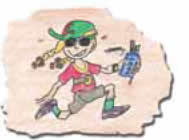 |
|
|
5.1 Imani lives in Sungo, a village near Lake Malawi in Africa. She is taking part in a documentary
5.2 Complete the clock diagram with your daily routine. Use your notes to compare your daily routine  |
LESSON 1 • PEOPLE AND PLACES
|
|
6.1 Read what Eva wrote about her new friend, NOTES 1. size and body ........................................ 6.2 You have decided to enter a creative writing
|
|
|
LESSON 2 • JOINED IN OUR DIFFERENCES
1.1 What is “culture”? Every country has its own, but the elements that make up “culture” are common for all people. Work in groups to complete the spider diagram below. Add your own ideas.
|
 |
1.2 In the summer of 2006, some students from 1.3 How is the meaning of these four words 1.4 Mini-project: Cultures on my street |
|
LESSON 2 • JOINED IN OUR DIFFERENCES
Useful tip At the beginning of each school year, an international school in Europe organises a “Welcome Evening” where foreign students introduce themselves and the countries they come from. You will hear one of these students, Maria Dolores, talk about her country. Listen and complete the table below.
3.1 Read what two other students say about their countries. What aspects of their
culture are they talking about?
|
LESSON 2 • JOINED IN OUR DIFFERENCES
|
|
3.2 Which of the two students mentions the following? 3.3 Look at the poster. Do you know how other people say ‘hello’
in their language? Discuss in class. 3.4 Game |
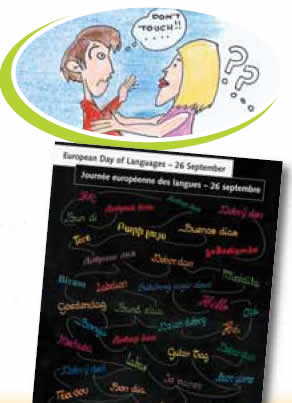 |
|
|
|
LESSON 2 • JOINED IN OUR DIFFERENCES
6.1 “ONE WORLD, ONE TRIBE” is a CD that brings together
many different kinds of music such as funk, reggae, R&B,
6.2 Get into groups to compose your own song that represents the idea of “Unity in Diversity”. Use a variety of instruments and write the lyrics. Ask your Music teacher for help. 6.3 Once you have created your
own song, draw a picture for
|
|
LESSON 3 • DIFFERENT PLACES - DIFFERENT BUILDINGS
1.1 Look at the different buildings below. What materials are they made of? What factors have affected the choice of materials?
1.2 The Erectheion, the Taj Mahal and the Colosseum are all important landmarks and famous tourist attractions. Do you know why these buildings were originally built? 1.3 Mini-project: A famous landmark |
LESSON 3 • DIFFERENT PLACES - DIFFERENT BUILDINGS
Useful tip 2.1 The 3 texts below come from an article about remarkable
|
The "Church of Holy Wisdom", also called Agia Sophia, is in Constantinople – now Istanbul. It was built by the emperor Justinian after the riots of AD 532. Anthemios and Isidoros were two of the Greek architects who designed it. It took six years to build and about ten thousand men worked on it. The first stone of the foundations was laid by the emperor himself. The building had brick walls, marble linings inside, amazing mosaics made up of tiny cubes of coloured glass, marble or gold and massive marble pillars. Of all its fascinating features though, perhaps the most remarkable is its huge, shallow dome, supported on piers made of limestone. There are also smaller half-domes around the largest, supported by arches - a typical feature of Byzantine design for big buildings. Agia Sophia is well over 45m high and over 60m long and wide. Today we are accustomed to seeing buildings as large as this, sometimes even larger. But in Justinian’s time, Agia Sophia must have been truly awe-inspiring. |
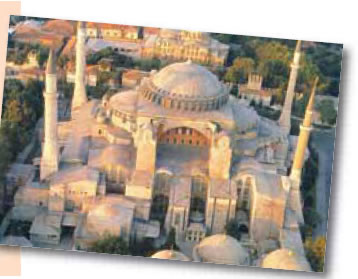 |
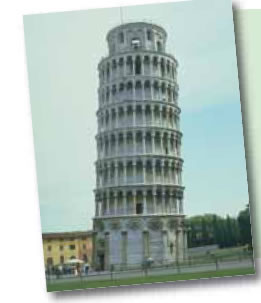 |
The famous Leaning Tower of Pisa is the bell tower of the cathedral in the city of Pisa, in Italy. Its height is 55.8m, it has 8 storeys and there are 294 steps to the top. Construction began in 1173 and it took 200 years to complete. The architect’s identity is still unknown, but we do know that he designed the tower to be vertical. After the third floor was built, the tower started to lean, mainly because its foundation was shallow – only 3 metres – and in weak soil. The Pisans stopped construction twice – for almost 100 years each time – because they were busy fighting battles with other Italian cities! In 1372, the tower was completed and seven bells were installed, one for each note of the musical scale. Over the years, there have been many attempts to straighten it, or halt the leaning. This was not as easy as it seemed. Some of those attempts had exactly the opposite result: the tower sank even further into the soil! The latest attempt was completed in 2001 and took ten years. The tower has been declared stable for at least another 300 years. |
|
LESSON 3 • DIFFERENT PLACES - DIFFERENT BUILDINGS
2.2 Do you think that these buildings have anything in common?
|
LESSON 3 • DIFFERENT PLACES - DIFFERENT BUILDINGS
|
|
LESSON 3 • DIFFERENT PLACES - DIFFERENT BUILDINGS
Look at the pictures and the tables below and write five sentences comparing the two
1. ........................................................................................................
You have decided to enter a creative writing competition. The title of the competition entry is the
|
LESSON 3 • DIFFERENT PLACES - DIFFERENT BUILDINGS
Your school is organising a Multicultural Fair and your class
Useful expressions We could look for information on the Internet. How to prepare your project 1. Choose your roles. Decide who is going to
|
SELF-ASSESSMENT
|
|
1. Vocabulary
... / 7 1.2 Match. ... / 8 2. Language focus 2.1 Expand the sentences. Use the time ... / 7
|
2.2 Complete the sentences by putting ... / 5 3. Everyday English ... / 3 4. Writing ... / 10
|
 |
|
SELF-ASSESSMENT
Work by yourself and tick the sentences that are true for you. You can discuss your answers in class. Working with Vocabulary 1. When I read or hear a word I don’t understand, 2. To help myself remember words In Lessons 1, 2, and 3 you learnt a lot of new vocabulary. Do you remember it? Do you need to spend more time on it? How can you improve your vocabulary? Share your ideas in class. Reflecting on your Learning Tick the sentences that are true for you.
|